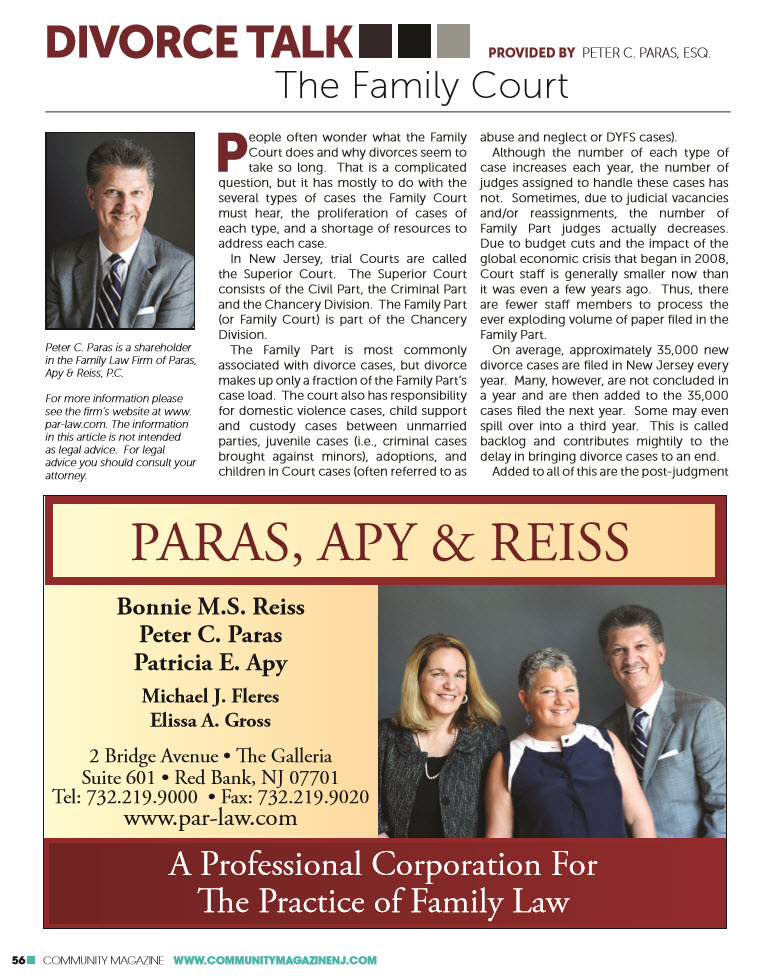People often wonder what the Family Court does and why divorces seem to take so long. That is a complicated question, but it has mostly to do with the several types of cases the Family Court must hear, the proliferation of cases of each type, and a shortage of resources to address each case.
In New Jersey, trial Courts are called the Superior Court. The Superior Court consists of the Civil Part, the Criminal Part and the Chancery Division. The Family Part (or Family Court) is part of the Chancery Division.
The Family Part is most commonly associated with divorce cases, but divorce makes up only a fraction of the Family Part’s case load. The court also has responsibility for domestic violence cases, child support and custody cases between unmarried parties, juvenile cases (i.e., criminal cases brought against minors), adoptions, and children in Court cases (often referred to as abuse and neglect or DYFS cases).
Although the number of each type of case increases each year, the number of judges assigned to handle these cases has not. Sometimes, due to judicial vacancies and/or reassignments, the number of Family Part judges actually decreases. Due to budget cuts and the impact of the global economic crisis that began in 2008, Court staff is generally smaller now than it was even a few years ago. Thus, there are fewer staff members to process the ever exploding volume of paper filed in the Family Part.
On average, approximately 35,000 new divorce cases are filed in New Jersey every year. Many, however, are not concluded in a year and are then added to the 35,000 cases filed the next year. Some may even spill over into a third year. This is called backlog and contributes mightily to the delay in bringing divorce cases to an end.
Added to all of this are the post-judgment divorce cases. These are cases in which the parties are divorced, but issues arise after the divorce that require judicial intervention. Cases in which a modification of alimony or child support is sought are an example. Enforcement motions are another. These are cases in which one spouse asks the Court to force the other spouse to do what he/she is obligated to do under the terms of the Judgment of Divorce, but has not done. Changes in custody and requests to move out of state with the children are two types of post-judgment cases that consume enormous amounts of time and resources.
The Administrative Office of the Courts, the administrative arm of the Supreme Court, is always looking for ways to streamline the process and to make it more efficient. However, there is only so much creativity that can be mustered in what appears to be a losing battle.
Too many cases and not enough judges create the backlog that causes delay. This has created an enormous incentive to consider mediation or arbitration (Community Magazine – May 2013) as a way to get to the finish line faster. More frequently, family lawyers and their clients have recognized that the best way to shorten the divorce process is to attempt Alternate Dispute Resolution. Success rates are increasing and it will not be surprising if, in a few years, Court is regarded as the alternate method of dispute resolution.


